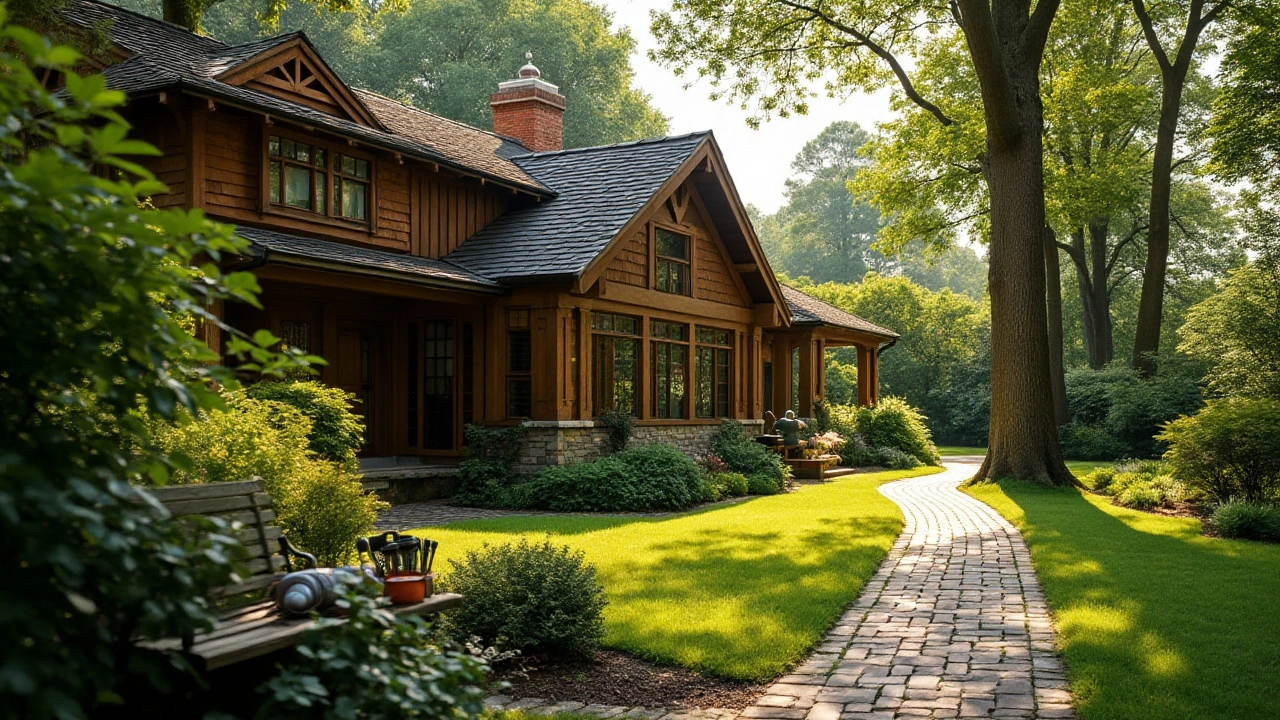Craftsmanship in Architecture: How Details Make Buildings Feel Human
Craftsmanship is the small stuff that tells you a building was made with care. Look past big shapes and you'll find hand-cut stone, crisp joinery, carved cornices, and tight brick patterns. Those details change how a place feels: warmer, stronger, more honest.
From Roman concrete vaults to American Craftsman porches, every style on this site shows a kind of craft. Byzantine mosaics rely on tiny glass pieces placed by skilled hands. Gothic Revival spikes and tracery demand precise carving. Even Minimalism depends on exact joints and perfect finishes. Craftsmanship isn't one thing—it's a range of skills that shape form, texture, and life.
How to Spot Quality Craftsmanship
Start with materials. Real stone, solid wood, and hand-forged metal age differently than cheap substitutes. Check the joints: dovetails, mortise-and-tenon, and tight mortar lines mean someone cared about how parts fit. Look at repetition—matching mouldings, consistent spacing of bricks, neat window frames. Irregularities can be signs of handwork, not mistakes, if they feel intentional.
Inspect transitions. Where wall meets ceiling or column meets base, a thoughtful transition reads as deliberate design. Notice ornament close-up: crisp edges on carvings, even color shifts in mosaics, and smooth patina on metal tell a story. Smell can help too—real wood and lime mortar have different scents than synthetics.
Practical Tips for Preservation and Use
When you want to keep craftsmanship alive, prioritize repair over replacement. Patching cracked plaster or re-pointing brick generally costs less and keeps character. Hire specialists for joinery or mosaic repair; general contractors often lack subtle skills. Use breathable materials like lime-based mortars to avoid trapping moisture in old walls.
For new projects, study old methods before copying their look. Imitation that skips underlying technique ends up flat. Encourage apprenticeships and local workshops. Investing in training brings real craft back into building work and keeps repair skills available for older structures.
Finally, notice how small details affect daily life. A well-built stair creaks the right way, handrails feel natural, and window sills sit at a useful height. Those choices come from experience, not trends. They matter in museums, homes, and public spaces alike.
If you like comparing styles, explore our tag posts on American Craftsman, Byzantine mosaics, Roman engineering, Gothic Revival carvings, and Beaux-Arts ornament. Each article shows how hands and tools shaped the final result. Pay attention next time you walk past a building—you might spot the craft hiding in plain sight.
Want more? Browse craftsmanship-tagged posts to study details up close and learn repair tips right now.

Reviving the American Craftsman: A Journey into Heritage
The American Craftsman movement, steeped in history and craftsmanship, is experiencing a revival. With increasing interest in handmade, authentic products, there's a spotlight on crafts that tell stories of skill and tradition. This article explores how people are rediscovering the value in heritage crafts, offering tips for those keen to dive into this creative realm. From woodworking to textile arts, it delves into how modern artisans are blending old techniques with fresh ideas.
Read more
Exploring the American Craftsman Style: Defining Elements and Legacy
The American Craftsman style is more than just an architectural design; it's a representation of American history and values. Emerging in the early 20th century, it emphasized skilled craftsmanship and simplicity, providing a distinct aesthetic that is both functional and beautiful. This enduring style continues to influence modern design, paying homage to the craftsmanship and attention to detail that defined the movement. Learn how the American Craftsman style evolved and how it continues to inspire our surroundings today.
Read more